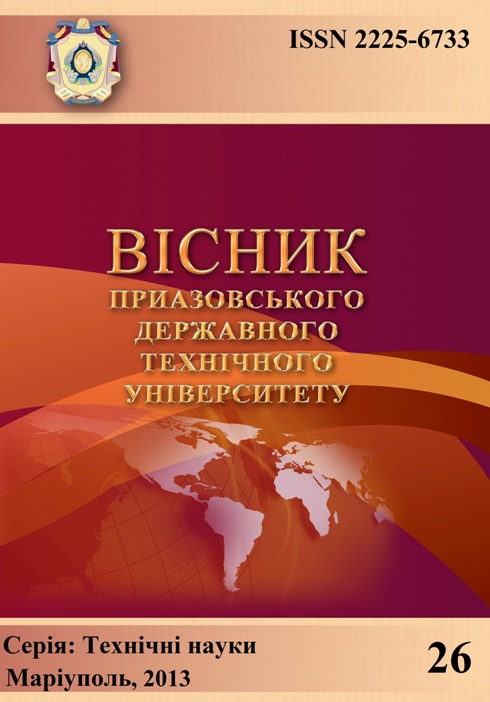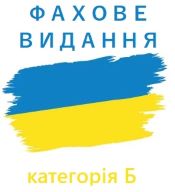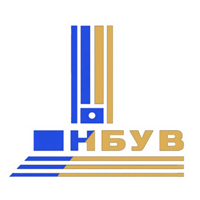Поверхневі модифікації зносостійких сталей методами індуковання метастабільних аустенітних структур
DOI:
https://doi.org/10.31498/2225-6733.26.2013.29926Ключові слова:
електро-дугове наплавлення, плазмова, електронно-променева обробка, метастабільний аустеніт, мартенсит, зносостійкістьАнотація
Проблема створення нових економічних наплавлювальних матеріалів, що не містять дорогі компоненти (Ni, Мо, Nb, W та інші) і нових зміцнюючих технологій для сталей актуальні і сучасні для багатьох країн. Одним з шляхів вирішення цієї проблеми - створювати метастабільні стани аустеніту і реалізовувати в процесі зношування деформаційні мартенситні γ→α′
перетворення (ДМП), що супроводяться виділенням карбідів, карбонитридів або інших інтерменталлідних з'єднань із збагачених фаз в наплавлених шарах. Мета цієї роботи - розвивати нові економічні (безнікелеві) порошкові наплавлювальні матеріали і нові технології поверхневого зміцнення, що забезпечують ефекти деформаційного самозміцнення в процесі зношування для підвищення характеристик і зносостійкості поверхневих шарів. Отримали розвиток нові шляхи і процеси створення поверхневих модифікацій фазово-структурних станів метастабільного аустеніту: електро-дугове наплавлення порошковими електродами метастабільних Fe-Cr-Mn марок сталей аустенітного, аустенітно-мартенситного і мартенситного класів, без термічної обробки, і у поєднанні з подальшими гартуванням, старінням, термоциклічною обробкою для регулювання ступеня метастабільної аустеніту (залежного від необхідного опору зношуванню та інших механічних властивостей); плазмова, електронно-променева або лазерна обробки з різним ступенем нагріву і плавлення (при необхідності у поєднанні з регулюючою термічною обробкою) легованих сталей різних структурних класів і призначення
Посилання
L.S. Lifshits, N.A. Grinberg, E.G. Kurkumelli, The bases of alloying surfacing metal, Moscow: Machine building (1984) 188 p.
I.N. Bogachev, R.I. Mints, Rising Cavitations’ Resistant of Parts of Machine. Moscow: Machine building (1964) 143 p.
L.S. Malinov, T.D. Aismondt, The strengthening of Metastable Austenite Сr-Mn-N Steels. News of Academy of Sciences of USSR. Metals 2 (1969) 113-120.
M.A. Filippov, V.S. Litvinov, Y.R. Nemirovskiy, Steels of Metastable Austenite. Moscow: Metallurgy (1988) 256 p.
G.B. Olson, M. Сohen, J. Less-Common Metals v. 28, №1 (1972) 107-117.
V.F. Zackay, E.R. Parker, D. Fahr, R. Bush, The Enhancement of Ductility in High-Strength Steels, Trans. ASM v.60, №1 (1969) 252-259.
Xinba Yaer, Kazumichi Shimizu, Hideto Matsumoto, Tadashi Kitsudo, Nadashi Momono, Erosive wear characteristics of spheroidal carbides cast iron, Wear 264 (2008) 947-957.
A.P. Cheiliakh. Economical Metastable Alloys and Strengthening Technologies, Kharkov: National Scientific Center “Kharkov Physical-Engineering Institute” (2003) 212 p.
L. K. Leschinskiy, S.S. Samotugin, I.I. Pirch, V.I. Komar, Plasma surface strengthening, Kyiv: Technical publishers (1990) 109 p.
A.G. Grigorianz, A.N. Safonov, Fundamentals of laser thermo-strengthening of alloys- Moscow: Higher school publishing house (1988) 159 p.
N.N. Rykalyn, N.V. Zuev, A.A. Uglov, Fundamentals of electron-beam treatment of materials, Moscow: Machine building publishers (1978) 239 p.
A.A. Shulga, Electron-beam treatment of bearing steels, Metal Science and Heat Treatment of Metals 7 (1992) 13-17.
##submission.downloads##
Як цитувати
Номер
Розділ
Ліцензія
Журнал "Вісник Приазовського державного технічного університету. Серія: Технічні науки" видається під ліцензією СС-BY (Ліцензія «Із зазначенням авторства»).
Дана ліцензія дозволяє поширювати, редагувати, поправляти і брати твір за основу для похідних навіть на комерційній основі із зазначенням авторства. Це найзручніша з усіх пропонованих ліцензій. Рекомендується для максимального поширення і використання неліцензійних матеріалів.
Автори, які публікуються в цьому журналі, погоджуються з наступними умовами:
1. Автори залишають за собою право на авторство своєї роботи та передають журналу право першої публікації цієї роботи на умовах ліцензії Creative Commons Attribution License, яка дозволяє іншим особам вільно розповсюджувати опубліковану роботу з обов'язковим посиланням на авторів оригінальної роботи та першу публікацію роботи в цьому журналі.
2. Автори мають право укладати самостійні додаткові угоди, які стосуються неексклюзивного поширення роботи в тому вигляді, в якому вона була опублікована цим журналом (наприклад, розміщувати роботу в електронному сховищі установи або публікувати у складі монографії), за умови збереження посилання на першу публікацію роботи в цьому журналі.









